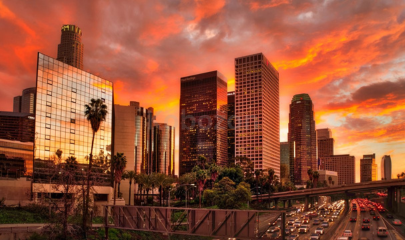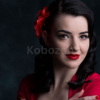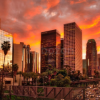Urban Landscape Post-Processing Techniques By Serge Ramelli
$14,00 $5,00
Urban landscape post-processing techniques: Unlocking the Artistry of City Photography – Instant Download!
Let’s embark on a captivating adventure to uncover remarkable insights that spark your curiosity and elevate your understanding

Urban Landscape Post-Processing Techniques By Serge Ramelli
Overview

Urban landscape post-processing techniques: Unlocking the Artistry of City Photography
Urban photography is an art form that captures the essence of city life, from sprawling skylines to intimate street scenes. In this context, urban landscape post-processing techniques become vital for photographers seeking to enhance their images and express their unique perspectives effectively. Serge Ramelli’s course on this topic offers a treasure trove of insights tailored for both amateur and professional photographers. Through this journey, we explore Ramelli’s captivating methods for transforming raw cityscape photographs into mesmerizing masterpieces, often eliciting emotions akin to seeing a city illuminated by its own vibrant pulse.
Understanding the Importance of Post-Processing in Urban Photography
Post-processing goes beyond mere edits; it is a form of storytelling that enables photographers to capture not only what their eyes see but also what their hearts feel. The distinction between a good image and a great one often lies in the intricacies of post-processing techniques. Ramelli emphasizes this critical aspect, teaching participants to wield tools such as Adobe Lightroom and Adobe Photoshop to manipulate light, texture, and color.
Imagine a bustling city at dusk, with the sun dipping below the horizon, casting a purple hue across the buildings. Without effective post-processing, this beautiful moment could risk fading into a mere snapshot. Ramelli’s approach equips photographers with the techniques to seize that fleeting beauty, enhancing colors and contrasts until the image resonates with viewers. As he aptly puts it, the goal of post-processing is to “breathe life into your photographs,” turning them into vivid representations of the emotional atmosphere one experienced during the shoot.
Techniques Highlighted in The Course
Optimal Camera Settings for Urban Photography
One of the foundational lessons in Ramelli’s program revolves around selecting optimal camera settings for urban shots. Participants learn to adjust shutter speed, aperture, and ISO to create the best possible images from the get-go. Here are a few key camera settings to keep in mind:
- Shutter Speed: Critical for capturing movement in busy streets or long-exposure shots of skylines.
- Aperture: Controls depth of field; a wider aperture (lower f-number) creates a blurred background, whereas a narrower aperture (higher f-number) sharpens the entire scene.
- ISO: Essential for low-light conditions; higher settings can introduce noise, but often unavoidable when shooting at night.
By understanding these settings, photographers can make informed choices about the pictures they capture, ensuring their foundation stands strong when it comes to post-processing.
Blending Images for Optimal Exposure
Another standout technique discussed in Ramelli’s course is image blending, which allows photographers to combine multiple exposures, capturing a range that showcases the entire tonal range of a scene. This technique is indispensable in cities where lighting conditions can be unpredictable, from areas shrouded in shadow to bright, sunlit spots.
Ramelli teaches how to use software to blend these images seamlessly, achieving a balanced exposure that reflects the reality of the scene. This method not only enhances the overall quality but also results in photographs that appear much more dynamic and engaging, as if they were painted by an artist instead of captured by a camera.
Advanced Techniques: HDR and Sky Replacement
For those wishing to delve deeper into the realm of complexity, Ramelli introduces advanced concepts such as HDR cityscapes and sky replacement. By utilizing Adobe Camera Raw, photographers can create High Dynamic Range images that represent a wider range of luminosity between the lightest and darkest areas of a photograph.
Moreover, Ramelli’s guidance on sky replacement proves invaluable, especially in urban landscapes where the sky can either complement or detract from the overall mood. This technique allows for the incorporation of stunning skies, transforming dull backdrops into dramatic, breathtaking scenes, showing that the artistry in photography does not only lie in what you capture but in what you can create.
Practical Techniques: Removal of Unwanted Elements
An often overlooked aspect of enhancing urban images is the removal of distracting elements. Ramelli emphasizes the significance of editing out tourists or unwanted foreground distractions, which can detract from the story an image tells. Employing techniques to manipulate elements within a frame allows photographers to focus on the aspects of a city that truly resonate with them, creating a clear, compelling narrative.
Balancing Critique and Creativity
While Ramelli’s editing style is sometimes critiqued for skewing towards over-editing, many photographers find his techniques indispensable in achieving a polished outcome. Some opponents argue that excessive editing can detract from authenticity, but others contend that art itself thrives on interpretation and transformation.
The modern landscape of photography, especially prevalent on platforms such as Instagram, lends itself to visually striking edits. The goal, therefore, is not to adhere strictly to realism but to evoke emotions and thoughts in viewers, inviting them into the world the photographer has created. It is this interplay between artistic license and photographic integrity that defines contemporary urban photography.
Conclusion
In conclusion, Serge Ramelli’s comprehensive course on urban landscape post-processing techniques serves as a guiding light for photographers eager to push their creative boundaries. By offering practical insights into camera settings, advanced techniques in blending and HDR creation, and practical removal of distractions, the course encourages an unwavering commitment to storytelling through urban imagery. As photographers navigate bustling streets and quiet corners of cities, they are invited to embrace the transformative power of post-processing turning fleeting moments into lasting visual narratives that resonate with emotion and complexity. Whether one is a novice or seasoned professional, Ramelli’s teachings empower artists to not just capture the essence of urban landscapes but to celebrate them in ways that inspire awe and curiosity.
Frequently Asked Questions:
Innovation in Business Models: We use a group purchase approach that enables users to split expenses and get discounted access to well-liked courses. Despite worries regarding distribution strategies from content creators, this strategy helps people with low incomes.
Legal Aspects to Take into Account: Our operations’ legality entails several intricate considerations. There are no explicit resale restrictions mentioned at the time of purchase, even though we do not have the course developers’ express consent to redistribute their content. This uncertainty gives us the chance to offer reasonably priced instructional materials.
Quality Control: We make certain that every course resource we buy is the exact same as what the authors themselves provide. It’s crucial to realize, nevertheless, that we are not authorized suppliers. Therefore, the following are not included in our offerings: – Live coaching sessions or calls with the course author.
– Entry to groups or portals that are only available to authors.
– Participation in closed forums.
– Straightforward email assistance from the writer or their group.
Our goal is to lower the barrier to education by providing these courses on our own, without the official channels’ premium services. We value your comprehension of our distinct methodology.
Be the first to review “Urban Landscape Post-Processing Techniques By Serge Ramelli” Cancel reply
You must be logged in to post a review.



















Reviews
There are no reviews yet.